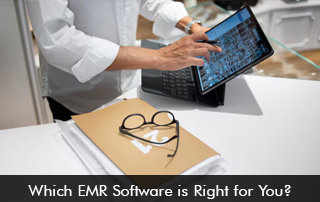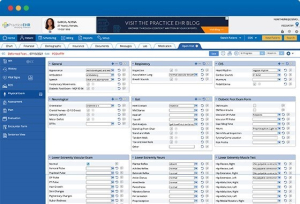In the digital age, healthcare providers are increasingly turning to Electronic Medical Records (EMR) software to streamline patient information management and improve care delivery. The right EMR system can revolutionize your practice, providing seamless access to patient data, enhancing communication within your care team, and ensuring compliance with healthcare regulations. However, with a multitude of EMR solutions available, selecting the one that fits your needs can be a daunting task. In this article, we’ll guide you through the crucial factors to consider when choosing an EMR software for your healthcare practice.
Understanding EMR and EHR Systems
Before diving into the selection process, it’s important to differentiate between EMR and EHR systems, as these terms are often used interchangeably.
Electronic Medical Records (EMR)
EMR software focuses on the digital version of a patient’s chart within a single practice. It includes medical history, diagnoses, medications, treatment plans, immunization dates, and test results. EMRs are designed to stay within the practice and do not easily travel outside the clinic’s walls.
Electronic Health Records (EHR)
Conversely, EHR systems encompass a broader view of a patient’s health by collecting records from all the clinicians involved in the patient’s care. EHRs are designed to be shared with other providers, allowing for coordinated patient care across different healthcare settings.
Understanding your practice’s specific needs will help you determine whether an EMR or EHR system is more suitable.
Key Factors in EMR Software Selection
When selecting an EMR system, consider the following key factors to ensure that you choose a solution that aligns with your practice’s requirements.
Practice Size and Specialization
Different EMR systems cater to various practice sizes and specialties. What might be an excellent fit for a small, general practice may not meet the complex needs of a large, multi-specialty group. Ensure that the EMR software you’re considering can accommodate your patient volume and is tailored to your area of specialization.
Usability and Training
A user-friendly interface is crucial for the adoption of any new software. Look for EMR systems that offer intuitive navigation and customizable features. Additionally, assess the training and support services provided by the vendor to facilitate a smooth transition for your staff.
Cost and Return on Investment
EMR systems come with varying pricing structures. While some may require a significant upfront investment, others might offer a monthly subscription model. Consider the total cost of ownership, including implementation, customization, support, and any additional hardware that may be needed. Determine the potential return on investment by evaluating how the EMR system can improve efficiency and patient care in your practice.
Integration and Interoperability
Your EMR system should be able to integrate seamlessly with other software used in your practice, such as practice management and billing systems. Interoperability with other healthcare providers and systems is also essential for maintaining continuity of care and meeting regulatory requirements.
Security and Compliance
Patient data security is paramount. Choose an EMR system that complies with HIPAA regulations and provides robust security features, such as encryption, access controls, and audit trails.
Scalability and Flexibility
As your practice grows, your EMR system should grow with you. Opt for a solution that can easily scale and adapt to your evolving needs without requiring a complete system overhaul.
Top EMR Software Features to Look For
While each practice’s needs may differ, certain EMR software features are universally beneficial. Here are some top features to look for:
Customizable Templates
EMR systems with customizable templates allow you to tailor the software to match your workflow and documentation style, increasing efficiency.
Clinical Decision Support
Tools that provide evidence-based guidelines and alerts can assist providers in making informed decisions about patient care.
Patient Portal
A patient portal offers patients access to their health information, facilitates appointment scheduling, and enables secure communication with their healthcare providers.
Mobile Access
With mobile access, providers can view and update patient records on the go, enhancing productivity and patient engagement.
Reporting and Analytics
Robust reporting capabilities enable practices to track performance, identify trends, and make data-driven decisions.
Evaluating EMR Vendors
When you’ve narrowed down your options, it’s time to evaluate the vendors.
Vendor Reputation and Stability
Research the vendor’s track record and stability in the market. Long-standing vendors with a solid reputation are generally more reliable.
Customer Support and Service
Consider the level of support offered by the vendor. Responsive customer service and technical support can make a significant difference in your day-to-day operations.
User Reviews and Testimonials
Seek feedback from other healthcare providers who have used the EMR software. Their insights can provide valuable information on the system’s performance and the vendor’s service quality.
Making the Final Decision
Before making the final decision, request demonstrations and take advantage of free trials to get a hands-on feel for the software. Involve your staff in the evaluation process, as their buy-in is crucial for successful implementation.









